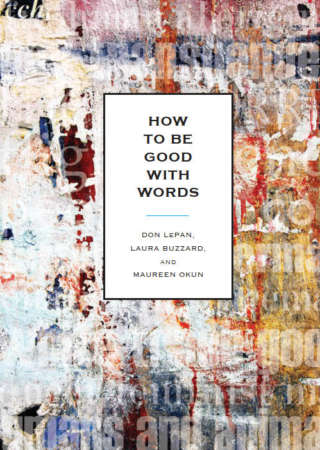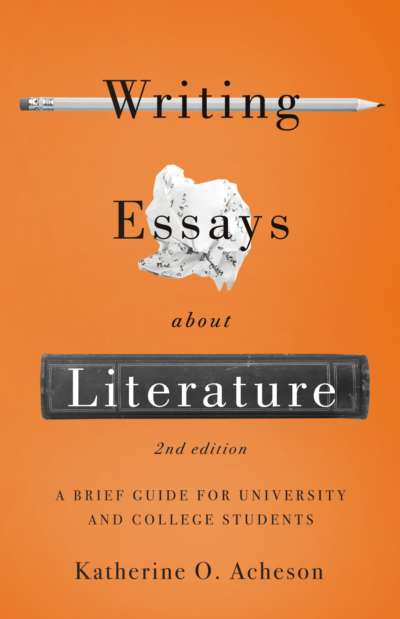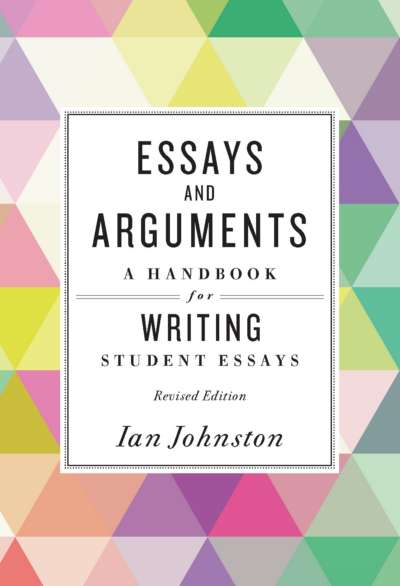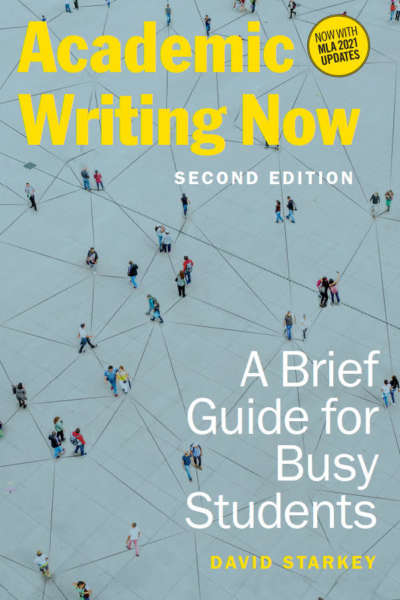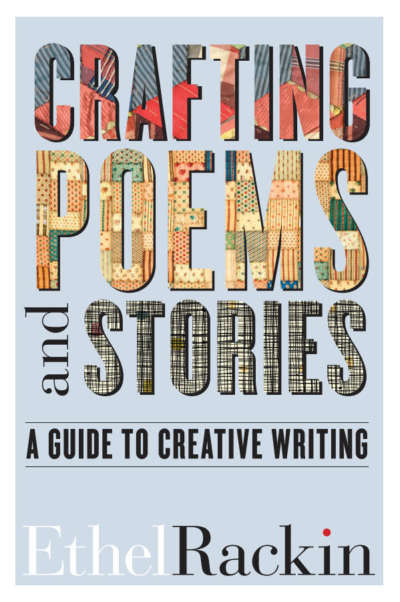“Even the most useful reference guides are not always, well, shall we say, riveting. A refreshing exception is the new Broadview Guide to Writing, which is smart, helpful, and even fun to read.” —Gerald Graff and Cathy Birkenstein, authors of They Say / I Say: The Moves That Matter in Academic Writing
Key Features
-
—Comprehensive coverage of writing in different academic disciplines
—Comprehensive treatment of citation style guides, with 2016 MLA style updates
—Expanded treatment of research methods
—Expanded treatment of ways to structure arguments
—Expanded treatment of writing in the workplace
—Expanded treatment of “How to Be Good With Words”—issues of gender, race, class, religion, sexual orientation, disability, etc.
—Expanded coverage for those whose native language is not English
—All-new chapter on reading images
—Extensive companion website featuring interactive exercises
Increasingly, writing handbooks are seen as over-produced and overpriced. One stands out: The Broadview Guide to Writing is published in an elegant but simple format, and sells for roughly half the price of its fancier-looking competitors. That does not change with the new edition; what does change and stay up-to-date is the content of the book. The sixth edition brings a substantial re-organization of the contents under three headings: Writing Processes, Writing Mechanics, and Writing Contexts. Coverage of APA, Chicago, and CSE styles of documentation has been substantially expanded, and the MLA section has now been fully revised to take into account all the 2016 changes. Also expanded is coverage of academic argument; of writing and critical thinking; of writing about literature, of paragraphing; of how to integrate quoted material into one’s own work; of balance and parallelism; and of issues of gender, race, religion etc. in writing. The chapter “Seeing and Meaning: Reading (and Writing About) Visual Images” is entirely new to the sixth edition.
This edition is intended primarily for American readers. Please see this page for our Canadian edition.
Comments
“The chapter on ‘How to Be Good with Words’ braves every thorny patch of ethical usage imaginable with clear-eyed candor, a serious and generous sensibility, and refreshing wit…. [Overall,] The Broadview Guide to Writing is not only informative and impressive; it is smart—smartly written and smartly designed.” — Dennis Paoli, Co-coordinator, Writing Across the Curriculum, Hunter College, CUNY
“This spiral-bound handbook is designed to provide all writers with basic and in-depth guidelines to all stages of the writing process…. The section on academic writing deserves particular mention here. Unlike many other writing handbooks, this volume provides in-depth discussion of the various types of academic writing and their unique characteristics. This section will be useful to the college writer… In particular, the guidance and analysis provided in the Academic Writing section will be of use to the undergraduate student who is expected to write papers in a wide variety of disciplines. Sections on writing about literature, writing about science, writing about texts and writing across the disciplines will clear up confusion on the expectations and norms of these varied types of academic writing…. This volume…can certainly serve as a useful one-stop resource for a wide variety of common questions.” — David Bell, Reference Reviews
“After a careful comparison between the two, I have just switched from A Writer’s Reference to The Broadview Guide to Writing. The lower price is definitely a factor in my decision—but it is so much more than that. The EAL designation [in the Broadview] is so much more welcoming and realistic, [and the overall] tone of the Broadview handbook is so approachable, clear, and encouraging.” — Carol Brown, Diablo Valley College
Comments on Previous Editions
“The Broadview Guide remains the most readable writing guide available—at any price. It’s the only usage guide I’ve ever actually read for fun. Moreover, it’s sensible, and it’s complete. … The authors assume nothing, but they don’t condescend.” — Jacky Bolding, University of the Fraser Valley
“There’s so much to like here: the sense of proportion, the sensible layout, the precision of the usage notes, the sound stylistic advice, and the examples. … The text is clearly informed by the best traditions of composition and rhetoric, but comes across in a disarming fashion with a common sense approach. … Long after the course is over, students will want to keep this book as a manual of style and usage.”— Thomas L. Martin, Department of English, Florida Atlantic University
“While it is often difficult to distinguish one writing handbook from another … The Broadview Guide to Writing proves exceptional in a number of ways. … [It is] an accessible and relevant guide for twenty-first century college students, with a keen eye toward process, style, and documentation.” — Karen Head, Special Advisor to the Writing & Communication Program, The Georgia Institute of Technology
“The Broadview Guide to Writing treats the rhetorical modes appropriately—not in any rigid or formulaic fashion as ends in themselves, but as means of fostering the development of ideas. It emphasizes stylistic fluency, something that writing pedagogy has too often neglected. … And the examples seem to me to be smart and engaging. All in all, this is a book that offers students the respect they deserve—and a book that deserves to be widely used.” — Beth Daniell, Director of Composition, Kennesaw State University
“Comprehensive, affordable, and student-friendly.” — Candice Rai, English Department, University of Washington–Seattle
“I use The Broadview Guide to Writing with my students and I plan to continue using it; it's very good —clear without being condescending. I especially appreciate its comprehensive discussion of writing styles in multiple academic disciplines. And one more thing—my students can actually afford to buy it.”— Jonathan Sadow, State University of New York at Oneonta


